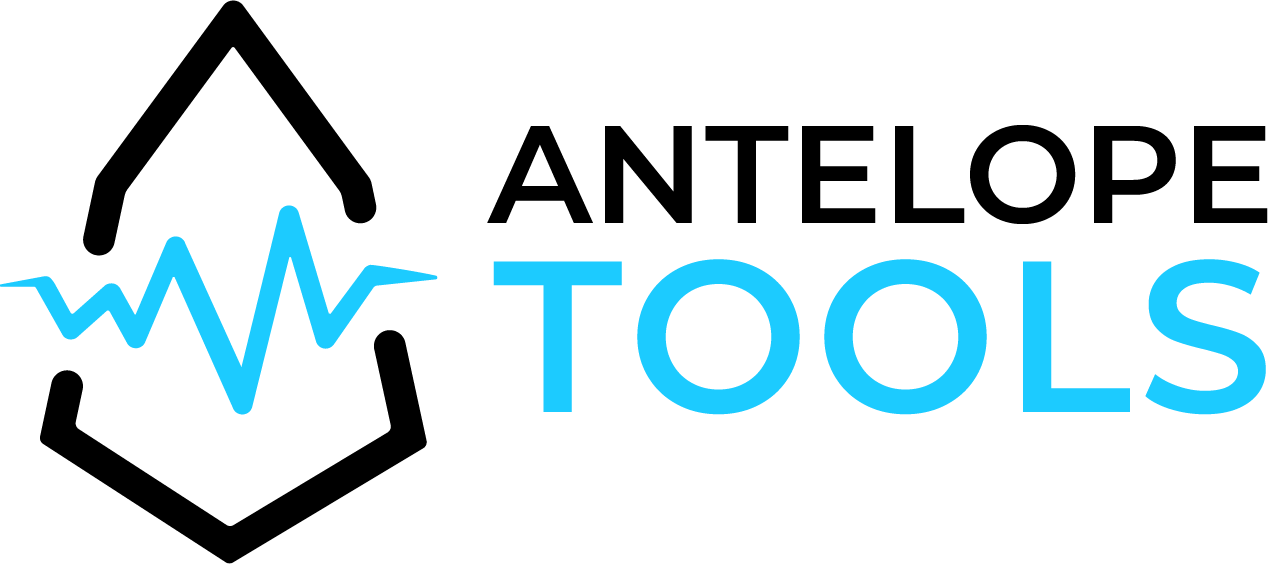Network and Infrastructure Dashboard for EOSIO networks.
Antelope Tools is an open-source tool that helps you visualize relevant data about Block Producer nodes and rewards distribution in the EOS network. The EOS network, launched in 2018, is a widely adopted public blockchain network that deploys a delegated proof of stake consensus mechanism. It operates autonomously and leverages a voting system to elect the twenty-one Block Producers that run the network. As a reward, these Block Producers receive EOS tokens.
Antelope Tools is a community-driven open-source tool built by a group of tech enthusiasts that believe in transparency to operate blockchain networks. We intend to provide a useful and straightforward app that will help visualize the Block Producers’ relevant information and rewards distribution in the EOS network to promote transparency and reliability.
As mentioned previously, the EOS network run with twenty-one elected Block Producers that receive EOS tokens in return. Token holders vote for the Block Producers they believe are the best candidates for this public blockchain. So, we believe that monitoring what’s happening on the network is essential to improve and measure node transparency. Antelope Tools’s main objective is to help you visualize decentralized and reliable information about each node and its activity.
Antelope Tools enables clear and graphic visualization of relevant information of Block Producers. We source data directly from the EOS public blockchain and information provided in their bp.json files. A bp.json file is essentially an info/configuration file that each Block Producer provides to verify their identity. Here is an example of a bp.json file: https://eoscostarica.io/bp.json.
For more information about Antelope Tools, contact us on our Telegram group: https://t.me/eoscr.
This project use all the latest tools and practices in the industry
-
hasura Hasura GraphQL Engine is an opensource service that connects to your databases & microservices and auto-generates a production-ready GraphQL backend
-
hapi A back end service for custom busines logic integrated with hasura using actions
-
react An open-source JavaScript library for building user interfaces.
-
docker-compose Compose is a tool for defining and running multi-container Docker applications
-
demux Demux is an architectural pattern for backend infrastructure for build applications on EOSIO blockchain to sourcing blockchain events to deterministically update queryable databases.
Within the download you'll find the following directories and files:
antelope-tools/
├── hapi
│ ├── src
│ | ├── config
│ | ├── routes
│ | ├── utils
│ | └── services
│ ├── .dockerignore
│ ├── .eslintrc
│ ├── .prettierrc
│ ├── Dockerfile
│ ├── yarn-lock.json
│ └── package.json
├── hasura
│ ├── metadata
│ ├── migrations
│ └── config.ymal
├── webapp
│ ├── src
│ | ├── api
│ | ├── components
│ | ├── config
│ | ├── containers
│ | ├── language
│ | ├── models
│ | ├── routes
│ | ├── theme
│ | └── utils
│ ├── .eslintrc
│ ├── .prettierrc
│ ├── Dockerfile
│ ├── yarn-lock.json
│ └── package.json
├── .env.jungle
├── .env.lacchain
├── .env.local
├── .env.libre
├── .env.libretestnet
├── .env.mainnet
├── .env.proton
├── .env.protontestnet
├── .env.telos
├── .env.telostestnet
├── .env.ultratestnet
├── .env.waxtestnet
├── .gitignore
├── docker-compose.yaml
├── .LICENSE
├── LICENSE
└── README.mdThere are some important folders like
hapi/src/apishould have all reusable code for example a code to generate tax invoicehapi/src/routesthis folder should only have the endpoint mapping and params validations and use functions from api folder to handle the business logic
Basic knowledge about Docker, Docker Compose and NodeJS is required.
Some things you need before getting started:
If you are using Windows you need to install WSL in version 2 and install a Linux distribution on Windows to run the project. In the Linux distribution is where you need to install git, node, yarn and Hasura CLI.
Additionally, you need WSL to use Docker Desktop as an intermediate between Windows and the Linux distribution. Otherwise, if you have a computer with low hardware specifications, it's recommended to use Linux instead of Windows with WSL.
- Clone this repo using
git clone --depth=1 https://github.com/edenia/antelope-tools <YOUR_PROJECT_NAME>. - Move to the appropriate directory:
cd <YOUR_PROJECT_NAME>. - As Antelope Tools can have different configurations copy the environment variables according to your needs in the
.envfile or usemake run <NETWORK>to use a configuration for a specific network.
# global
STAGE=dev
APP_NAME=antelope-tools
# wallet
WALLET_DATA=./wallet_data
# postgres
POSTGRES_USER=eoscr
POSTGRES_PASSWORD=password
POSTGRES_DB=localdb
POSTGRES_DATA=./db_data
# hasura
HASURA_GRAPHQL_ENABLE_CONSOLE=true
HASURA_GRAPHQL_DATABASE_URL=postgres://eoscr:password@postgres:5432/localdb
HASURA_GRAPHQL_ADMIN_SECRET=myadminsecretkey
HASURA_GRAPHQL_UNAUTHORIZED_ROLE=guest
# hapi
HAPI_EOS_API_ENDPOINTS=["https://jungle.edenia.cloud"]
HAPI_EOS_API_CHAIN_ID=73e4385a2708e6d7048834fbc1079f2fabb17b3c125b146af438971e90716c4d
HAPI_EOS_BASE_ACCOUNT=baseaccount
HAPI_EOS_BASE_ACCOUNT_PASSWORD=PW...
HAPI_EOS_WALLET_URL=http://wallet:8888
HAPI_EOS_BP_JSON_ON_CHAIN=false
HAPI_EOS_BP_JSON_ON_CHAIN_CONTRACT=
HAPI_EOS_BP_JSON_ON_CHAIN_TABLE=
HAPI_EOS_BP_JSON_ON_CHAIN_SCOPE=
HAPI_HASURA_URL=http://hasura:8080/v1/graphql
HAPI_HASURA_ADMIN_SECRET=myadminsecretkey
HAPI_SERVER_PORT=9090
HAPI_SERVER_ADDRESS=hapi
HAPI_SYNC_PRODUCERS_INTERVAL=86400
HAPI_SYNC_PRODUCER_INFO_INTERVAL=1
#webapp
PORT=3000
REACT_APP_TITLE="EOS Jungle4 Testnet Network Dashboard"
REACT_APP_DEFAULT_PRODUCER_LOGO=https://bloks.io/img/eosio.png
REACT_APP_FOOTER_LINKS=[]
REACT_APP_EOS_RATE_LINK=https://jungle.eosrate.io:8080
REACT_APP_USE_REWARDS=true
REACT_APP_USE_VOTES=true
REACT_APP_USE_CPU_BENCHMARK=true
REACT_APP_HASURA_URL=http://localhost:8080/v1/graphql
REACT_APP_EOS_API_HOSTS=["jungle.edenia.cloud"]
REACT_APP_EOS_API_PORT=443
REACT_APP_EOS_API_PROTOCOL=https
REACT_APP_EOS_CHAIN_ID=73e4385a2708e6d7048834fbc1079f2fabb17b3c125b146af438971e90716c4d
REACT_APP_EOS_USE_BP_JSON_ON_CHAIN=false
REACT_APP_EOS_BP_JSON_ON_CHAIN_CONTRACT=producerjson
REACT_APP_EOS_BP_JSON_ON_CHAIN_TABLE=producerjson
REACT_APP_EOS_BP_JSON_ON_CHAIN_SCOPE=producerjson
REACT_APP_STATE_HISTORY_ENABLED=false
At this point you can run make start or make run <NETWORK>, you can check the services runing on:
- hapi at http://localhost:9090/healthz
- hasura at http://localhost:9695
- webapp at http://localhost:3000
Please Read EOS Costa Rica's Open Source Contributing Guidelines.
Please report bugs big and small by opening an issue
Contributions of any kind are welcome!
Edenia runs independent blockchain infrastructure and develops web3 solutions. Our team of technology-agnostic builders has been operating since 1987, leveraging the newest technologies to make the internet safer, more efficient, and more transparent.







